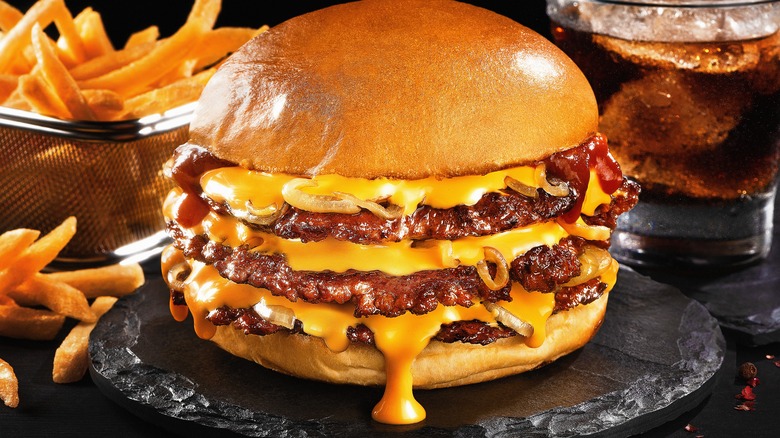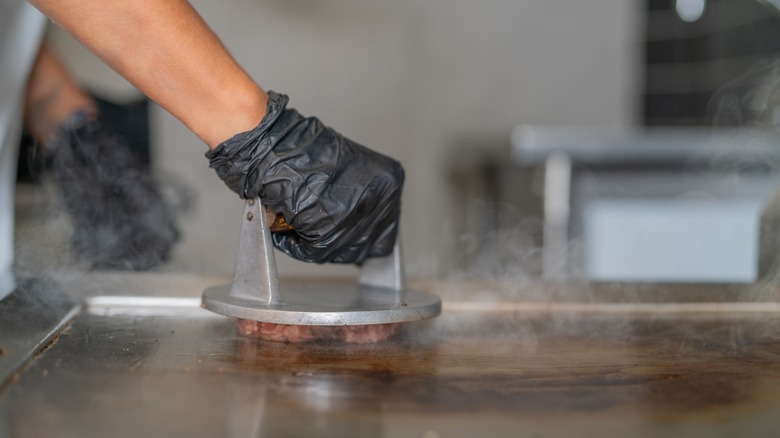Are Smash Burgers Just Really Thin Beef Patties?
If you've ventured out to satisfy a burger craving lately, you may have noticed that everywhere you look, restaurants are advertising smash burgers. Distinctly svelter than the thick, topping-heavy burgers that dominated diners and barbecues in the past, so-called smash burgers appear to have taken over the fast food scene in the last few years, especially in foodie enclaves. The Guardian recently noted that smash burgers have come to dominate the London culinary world, while food journalists in New York and Los Angeles have been covering the rising trend in their cities since the early 2020s. Interestingly, this burger style traces its roots back to Kentucky.
But what exactly are they — just burgers with especially thin patties? Well, yes, but they're also so much more. A smash burger is prepared exactly how you might imagine: by "smashing" a relatively small, loosely formed patty onto the grill, so that it spreads thin and more of the meat comes into contact with the hot surface. This way, the edges get extra-crispy and a deliciously flavorful crust forms, giving smash burgers a more varied texture on their patties than a traditional burger. For those who like their burgers extra-meaty, most smash burgers come with the option to double or triple-up on patties. And unlike excessive, out-of-style gourmet burgers piled high with eccentric toppings, smash burgers tend to be served in accordance with Anthony Bourdain's one-hand rule: Simply, with cheese, sauce, a bun, and maybe pickles and grilled onions — lettuce and tomato optional.
The Maillard reaction is the secret to smash burgers' success
Everything we love about smash burger patties — their crispy edges, savory crust and depth of flavor — is a result of the Maillard reaction. You may have never heard the name, but you're surely familiar with the concept, as it's essentially the chemical process that occurs when foods change color during cooking. That's right — your beer and your meat are brown for the same reason. When foods are exposed to high heat in low moisture environments, the amino acids in their proteins react with their sugars to create new, complex compounds that correspond to darkened colors and richer flavors.
Pretty much all grilled burger patties undergo the Maillard reaction; after all, that's how they go from pink to brown. But the key to smash burgers is in ensuring that the greatest possible surface area of the meat comes into direct contact with the griddle, which maximizes the Maillard reaction's effect. Lore dictates that the first smash burger was pressed into the griddle with a can of beans, but nowadays, a grill press usually does the job.
Some smash burgers amplify their flavor even further with mustard frying, a practice widely credited to West Coast favorite In-N-Out Burger, where mustard is spread on one side of the patty prior to grilling. Smash burgers are also popularly associated with grilled onions, and Oklahoma-style smash burgers are cooked by covering meat in a thin layer of onion before grilling, allowing them to caramelize, char and flavor the meat.

